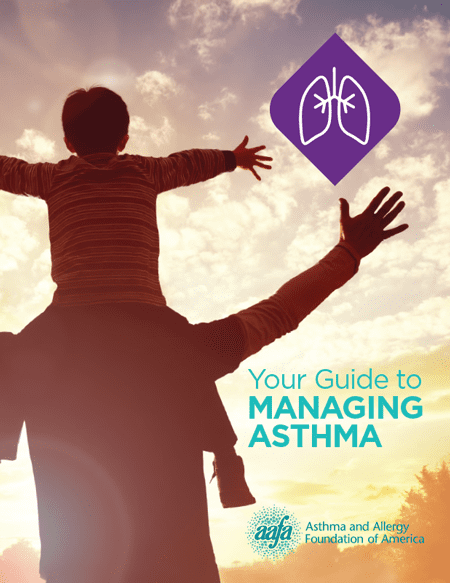Asthma
Asthma Information
Nearly 28 million people in the U.S. have asthma.1,2 It is a long-term disease that causes your airways to become swollen and inflamed, making it hard to breathe. There is no cure for asthma, but it can be managed and controlled.
The best way to manage asthma is to avoid triggers, take medications to prevent symptoms, and prepare to treat asthma episodes if they occur.
AAFA has a lot of information on our site to help you learn more about asthma. Also consider joining AAFA’s online asthma support community, a local support group, or a regional AAFA chapter if one is in your area.
What Are the Symptoms of Asthma?
Common symptoms are coughing, shortness of breath, wheezing, and chest tightness (or pain). Asthma may lead to a medical emergency. It is important to know the signs of a severe asthma episode (or asthma attack).
How Do Doctors Diagnose Asthma?
A doctor may use a few different ways to look for asthma. These include:
- Taking a detailed medical history
- A physical exam
- Lung function tests
- Chest or sinus X-ray
- Blood tests to look for certain markers
- Allergy tests
The doctor will look at the results from these tests. They will then decide what type of asthma you have. They will develop a treatment plan based on the type and severity of your symptoms. If you have moderate to severe persistent asthma, AAFA recommends you see an allergist or pulmonologist if possible. Allergists treat allergies, asthma, and immune disorders. Pulmonologists treat asthma and other lung or respiratory diseases.
What Is the Treatment for Asthma?
You and your doctor will come up with a plan to treat your asthma. It often involves a blend of medication and avoiding your asthma triggers. An asthma action plan is an important tool to help you know when and how to treat your asthma symptoms.
What Triggers Asthma?
Asthma symptoms can appear when you are exposed to a trigger. A trigger is something you are sensitive to that makes your airways become inflamed. This causes swelling, mucus production, and narrowing in your airways. Common asthma triggers are pollen, air pollution, animal allergens, scents/fragrances, certain gases, extreme weather changes, smoke, dust mites, stress, and exercise.
How Can I Prevent an Asthma Episode?
The best way to prevent an asthma episode, or attack, is to follow your treatment plan. Learn your triggers and avoid or reduce your exposure to them. Take your allergy and asthma medicines when you should. Use your quick-acting medicine as soon as you start to notice symptoms.
Many people live healthy lives with asthma if it’s managed well. With a good treatment plan and guidance from your doctor, you can still do much of what you enjoy. For example, many professional athletes have asthma.
Asthma Facts and Figures
More people than ever before have asthma — nearly 28 million people in the U.S. have asthma.1,2 It is one of the most common and costly diseases. AAFA tracks other important data such as who is most at risk of asthma, how many asthma emergency room visits happen, how many deaths from asthma happen, and how many missed school days are due to asthma.
References
- National Center for Health Statistics. NHIS Adult Summary Health Statistics. Data accessed October 7, 2024. Available from https://data.cdc.gov/d/25m4-6qqq
- National Center for Health Statistics. NHIS Child Summary Health Statistics. Data accessed October 7, 2024. Available from https://data.cdc.gov/d/wxz7-ekz9













